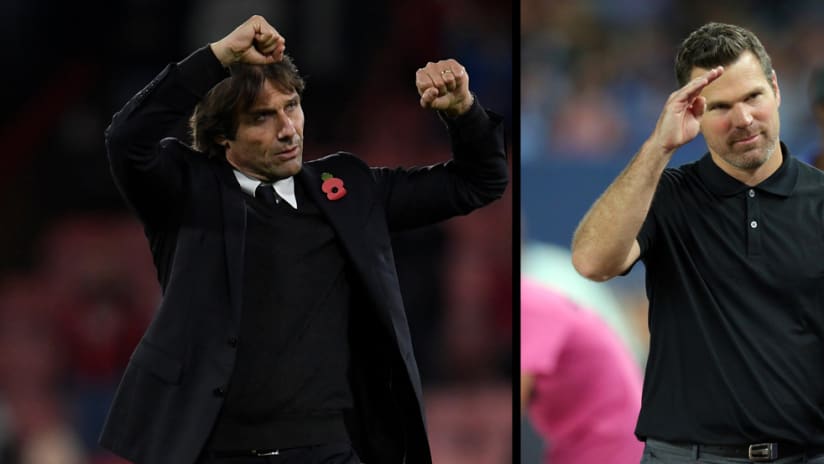TORONTO — Greg Vanney's head coaching career at Toronto FC started off with some disappointment as he failed to qualify the club for the Audi MLS Cup Playoffs in 2014, after being appointed to the position on Aug. 31 of that year.
Over the next couple of seasons he led a transformation, as the club became one of the most successful teams in MLS. This included two Canadian Championships, a Supporters' Shield and now two MLS Cup final appearances. Part of that success over the last year-and-a-half has been fueled by a formational shift to a 3-5-2.
Much has been written about the change since Vanney implemented it towards the end of last season. As always when discussing formations, it's important to understand that it isn't just about where players line up, but where and how they apply pressure defensively and how they plan to connect going forward.
It's easy to understand why Vanney decided to experiment with the formation. With two star forwards on the roster, Sebastian Giovinco and Jozy Altidore, there's only so many ways to use them effectively. He set his team up in a diamond 4-4-2 for much of last season before moving away from it, and the flat 4-4-2 didn't work out: "It's not a system I love because I don't love how the angles set up for eachother," Vanney told MLSsoccer.com on Wednesday.
One of the advantages they did have is the abilities of their two wingbacks, Justin Morrow and Steven Beitashour. The two had always been efficient going forward, going all the way back to their San Jose Earthquake days, and this allowed them to throw off the opposing defense.
"One of the reasons we went to 3-5-2 is because it enabled us to get our wingbacks higher up the field faster which then would pull the fullbacks who were sitting on top of our two forwards and the center backs it would make them force them to have to respect the width of the field because our wingbacks would take higher positions," Vanney said. "The goal of that was to bring pressure off of Seba and Jozy to get numbers off of them so that they could have a little more space to work."
Of course, none of this happened in a vacuum. During the 2014 World Cup, Louis van Gaal implemented a similar formation with the Netherlands to help lead them to the semifinals. Antonio Conte is probably the leader of the turn to the 3/5-man backline worldwide after having great success with it at Juventus, Chelsea and the Italian national team.
Vanney acknowledged that Conte was a source of knowledge as he began applying this change.
"Finding games where you games where could watch the Italian team, who were very sophisticated and very calculated in how they used that," he said, "for sure it's something that we spent a lot of time dissecting and and putting our guys in these types of positions."
Toronto isn't the only team that has turned to this system. Columbus Crew SC used it for parts of this season, including the second leg of the Eastern Conference Championship against TFC, and the New York Red Bulls played a 3-3-3-1 system for much of the season.
The LA Galaxy, Montreal Impact and San Jose Earthquakes all experimented with similar systems this system. Could we see even more in 2018?
"So what I would say is I think more teams are becoming but more willing to sort of adapt and do things a little differently and maybe not doing the same thing all the time but maybe seeing the value of doing something that has three in the back," Vanney said. "Again not just because we do it because I think worldwide it's becoming used in a lot more scenarios and so. I think more coaches now are seeing the value of it."












